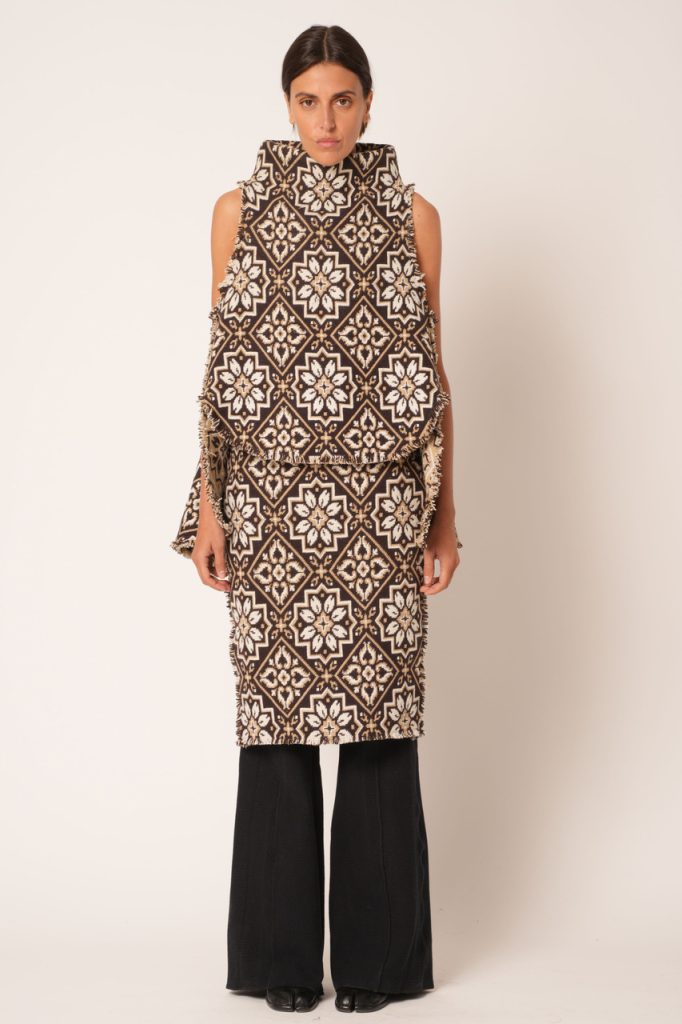In the landscape of Italian craftsmanship, there are hidden treasures that tell stories of tradition, passion, and sustainability. One of these treasures is the regenerated Abruzzo blanket by Vuscichè, a brand that has successfully reinterpreted a classic of Abruzzo craftsmanship with a modern twist. Since 2019, Vuscichè has embarked on an ambitious project: to breathe new life into Abruzzo blankets, transforming them into unique and sustainable pieces.
The value of tradition: The Abruzzo blanket is a symbol of the culture and tradition of the region. Originally crafted from sheep’s wool, it was used to protect against the harsh winters of Abruzzo. Vuscichè has sought to preserve the authenticity of these blankets, keeping their charm and historical value intact. Each blanket is carefully selected and handmade, keeping alive the art of local craftsmanship.
Sustainable regeneration: But what makes Vuscichè’s blankets so special? The answer lies in their sustainable regeneration. Using innovative techniques and eco-friendly materials, Vuscichè transforms Abruzzo blankets into unique and contemporary pieces. The blankets undergo a process of washing and regeneration, eliminating any defects and making them as soft and comfortable as new. This sustainable approach reduces environmental impact and promotes material circularity.
An opportunity for the local community: Vuscichè’s project of regenerating Abruzzo blankets not only promotes sustainability but also offers an opportunity for the local community. By collaborating with artisans and small businesses in Abruzzo, Vuscichè supports the local economy and preserves traditional skills. We, as designers, also recommend repairing and reusing the same material to preserve and extend the product’s lifespan. Each regenerated blanket is a result of craftsmanship and a love for tradition, contributing to keeping Abruzzo’s culture alive.
Replica: In the world of craftsmanship, we often come across replicas of artworks and historical artifacts. However, when it comes to replicating the Abruzzo blanket, it is essential to question whether this practice still makes sense in the current context.
Using extraordinary beauty as raw material does not promote sustainability: The original Abruzzo blanket is a true gem of extraordinary beauty and historical value. Using these blankets as the basis for replicas may seem like a way to preserve tradition, but it could actually lead to a gradual reduction in the availability of these genuine works of art over time. Instead, promoting the conservation and responsible use of the original blankets could be a more sustainable approach to preserving their beauty and value.
Replicating means copying, and this goes against the essence of any work of art: Art and craftsmanship are unique expressions of creativity and originality. Replicating an Abruzzo blanket may seem like a way to make art accessible to a broader audience, but it compromises the very essence of the original work. Each Abruzzo blanket is unique in its design, details, and the history it carries. Creating standardized copies could diminish the artistic value and uniqueness of these artworks.
We are in an era where we are called to make responsible choices to preserve craftsmanship: In an age where sustainability and resource conservation have become priorities, it is crucial to consider whether the practice of replicating the Abruzzo blanket represents a responsible choice. Instead of limiting ourselves to replication, we could focus on innovative methods to preserve and promote Abruzzo craftsmanship. This could include the use of sustainable materials, the promotion of local artisanal skills, and the creation of new designs inspired by tradition, without copying it.
Replicating the Abruzzo blanket may seem like a way to preserve tradition and make art accessible to a wider audience. However, it is essential to question whether this practice is genuinely sustainable and respectful of the uniqueness and artistic value of the original works. Instead of limiting ourselves to replication, we could engage in innovative methodologies to preserve and promote Abruzzo craftsmanship while always respecting the essence and uniqueness of these artworks that are products of their time.

